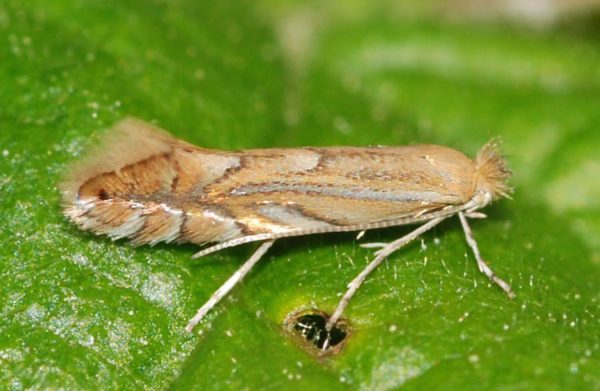
Fluoridea (Phthorimaea operculella Zell) - better known as potato moth - a harmful insect that can cause the death of the entire potato crop. To cope with this trouble, you need to not only know how to deal with it, but also use timely control measures and the necessary preventive measures before and after the potatoes are in the garden.
The absence of natural enemies allowed her to reproduce absolutely unhindered, and her narrow specialization (Fluorimea prefers potatoes, tobacco and wild nightshade nightshade) made her a real scourge for gardeners, and for those who transport, store and retail the demanded vegetable. The export of potatoes from America, where the culture is grown in the central regions, has led to the fact that the pest, whose homeland was originally considered the African continent, has spread almost throughout the world.
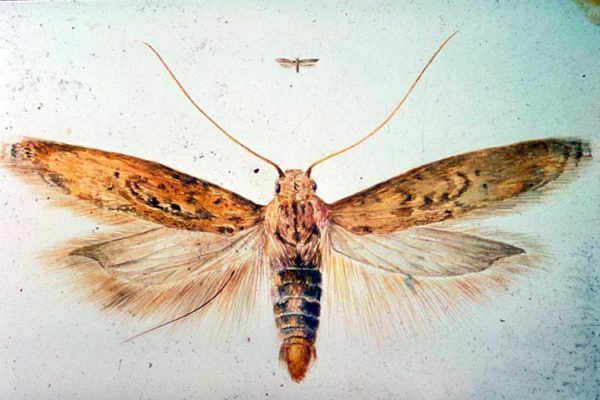
Ways and methods of how to deal with it are being sought not only in America, where farmers and the state spend a lot of physical and material resources to save entire fields affected by Fluoridea. Plant growers in many countries are developing measures to combat pests that are inferior to the Colorado potato beetle in the field and in the garden in terms of damage inflicted. Prevention, carried out in advance in order to prevent the occurrence of pest populations, allows you to ensure the safety of the crop stored in warehouses. If you do not resort to the necessary chemical means, the mole is able to remove tons of the finished product from the suitability for food.
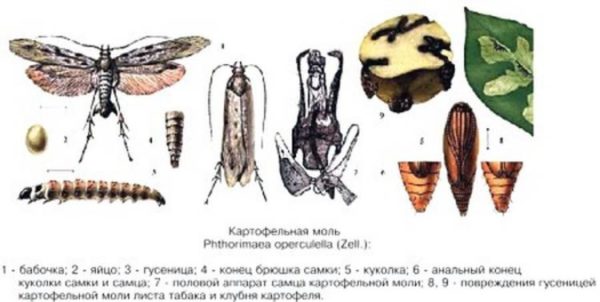
Content
Appearance and dimensions
The photo clearly shows that the potato moth, unlike the Colorado potato beetle, is equipped with camouflage means in nature:
- body flatness;
- inconspicuous grayish-brownish color;
- a smooth transition of the tones of the body from pale brown on the body to gray-brown with yellowish scales on a pair of wings;
- wings, with a span of 14 to 16 mm wide, that fold and make the insect relatively small (6-8 mm in a calm state);
- uneven, fleecy-terry edges of the wings;
- long, finest antennae.
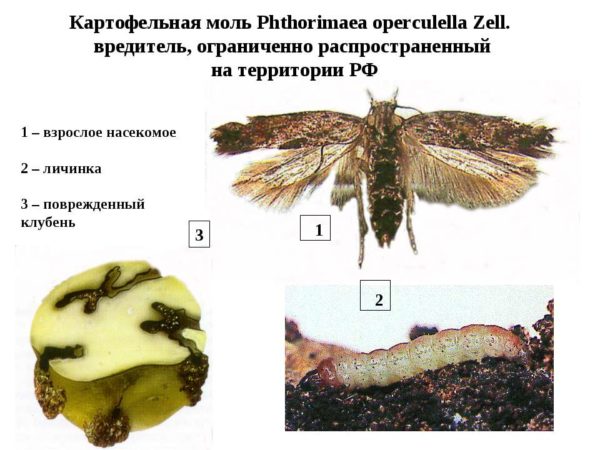
Its distinctive features, in comparison with the Colorado potato beetle, equipped with a bright color, consist in camouflage means and the ability to remain invisible. Colorado leaf gnaw has a bright color that prevents natural enemies and the specific properties of the insect and its unsuitability for food. Potato moth, which is a butterfly with wide wings in the adult stage, is of interest to many birds and carnivorous predators. For crops, its main danger is the ability to reproduce intensively. She cannot eat, because her mouth opening is reduced, and she lives from 3 days to 2 weeks.
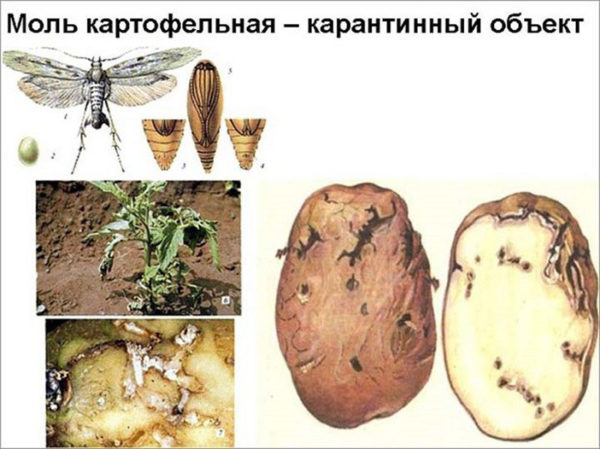
Such fertility is good for an insect, which thus preserves the population, despite external enemies. But this is a factor that poses a danger to those involved in the cultivation of nightshade crops, especially tobacco and potatoes. Potato moth, in terms of danger and ability to defeat, is in parity with the Colorado potato beetle, and tens of thousands of people are anxious about finding tools and technologies, are engaged in scientific research to find out how to deal with it with maximum effect.
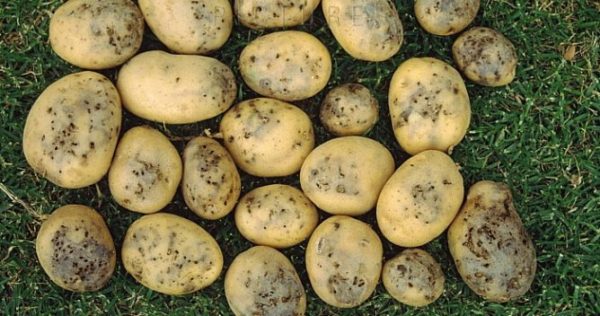
Developmental stages and lifestyle
In late April - early May, the massive years of potato moth in nature begin. Adults hatch from pupae that have hibernated in suitable places for this, and are activated when the air reaches a certain temperature. Strengthened control measures during storage are necessary due to the fact that at a stable temperature maintained in industrial warehouses with the help of special plants, not only the safety of potatoes is ensured, but also the possibility for year-round reproduction of the pest. Of particular danger are caterpillars that hatch from butterfly-laid eggs.
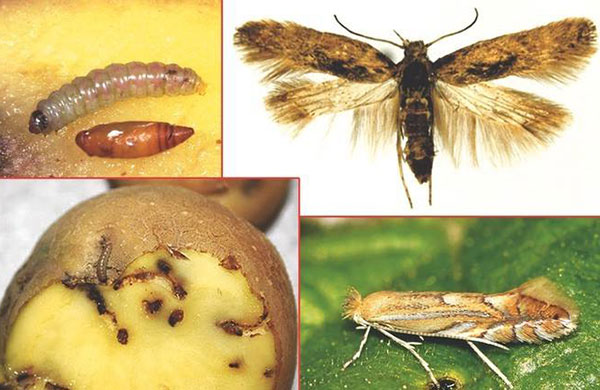
The caterpillar fills the completed moves with secretions and cobwebs, but its negative impact is not limited to this. An experienced gardener determines the infection of a site with potato moth by several signs at once:
- holey, gnawed leaves on which the done moves are perfectly visible, and small bulges filled with caterpillar excrement;
- cobwebs and small cells on the inside of the leaf;
- withered, or dried bush tops on which flowering is not tied.
Caterpillars are colored in the color of the food they eat. They can be green if they feed on leaves and stems, and transparent-whitish when they eat tuber pulp. The larva (or caterpillar) goes through 4 molts, which are sometimes called its ages, and all this time it intensively devours the culture selected for attack. After harvesting the potatoes, the moth is able to switch to other foods, for example, to wild nightshade crops, or planting other cultural species.
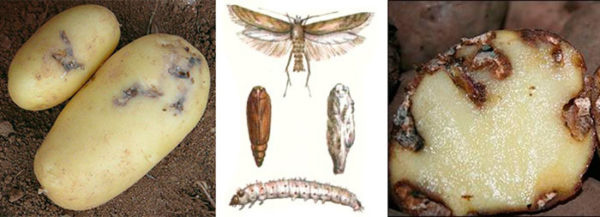
Control measures on landings and in storage, prevention in the garden
Pest control is carried out systematically and sequentially, throughout the season and begins from the moment of landing. For sowing potatoes, only healthy tubers are selected, appropriately checked and processed. So that the larvae do not winter in the ground and do not appear again in the spring, the infected tops and root crops are destroyed, and not rushed into a compost pit. The irrigation method during irrigation leads to the destruction of most butterfly moths that can lay eggs. The depth of the seed material to a level of 15 cm, and double classical hilling do not allow the penetration of caterpillars into the tubers.
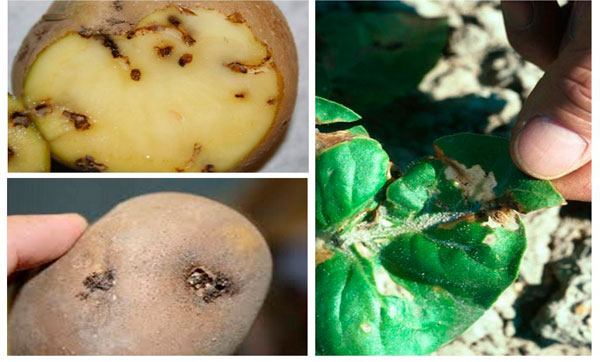
Early ripening potato varieties are least affected, and owners of small plots have successfully used this. In industrial cultivation, mid-ripening varieties are treated with insecticides, the most effective are the actions of Danadim, Bi 58, Ditox, Di 68 and Rogosa-S. In warehouses, the premises and containers are disinfected, low temperatures and humidity are maintained, which slow down the moth development cycle to 150 days.
If signs of infection appear, fumigators and insecticides are used. Adopted in advance, measures of control and prevention will avoid infection by a pest, and get a full crop.

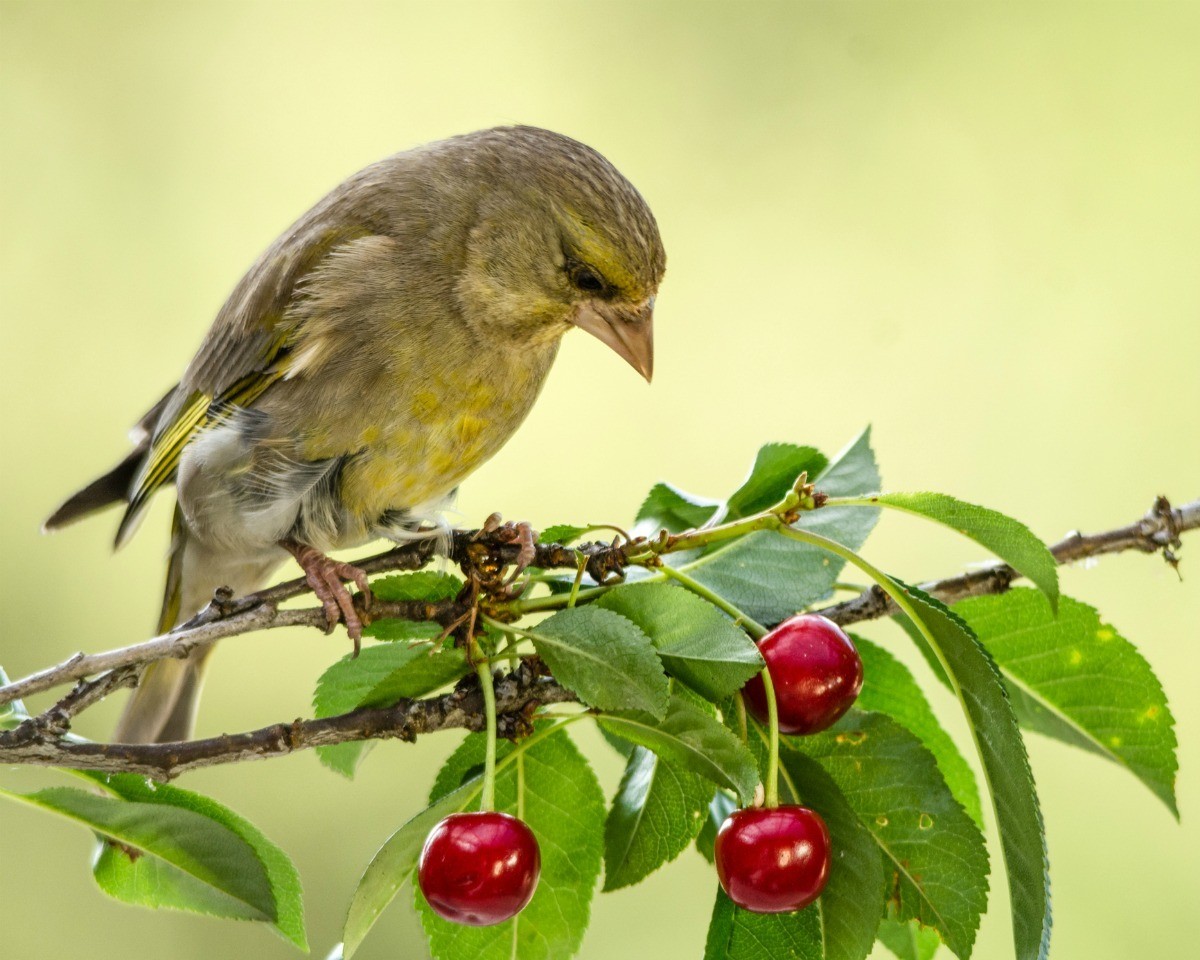
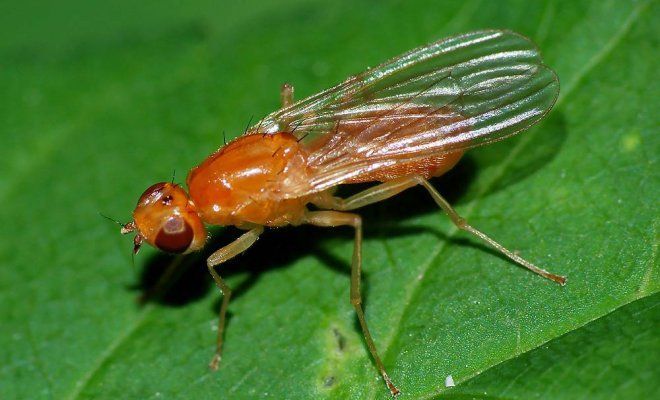
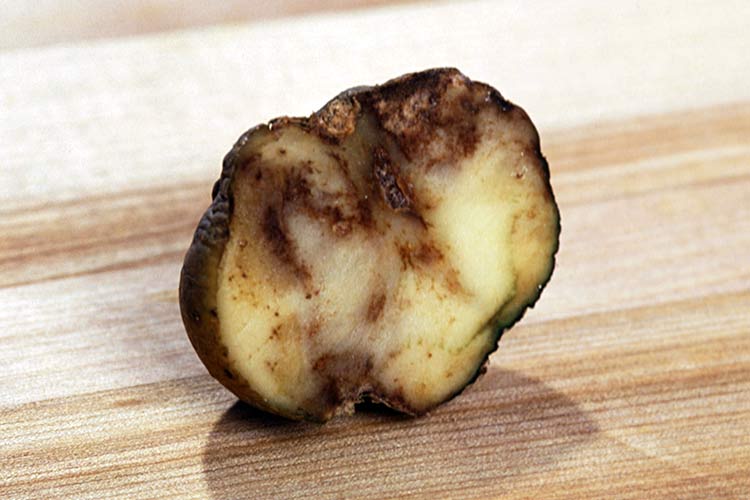
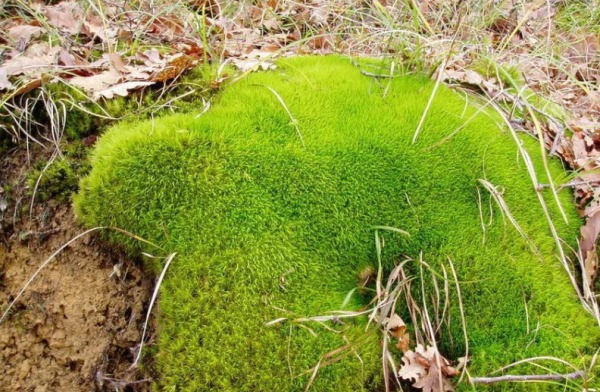 Where does moss come from in the garden and is it necessary to get rid of it?
Where does moss come from in the garden and is it necessary to get rid of it?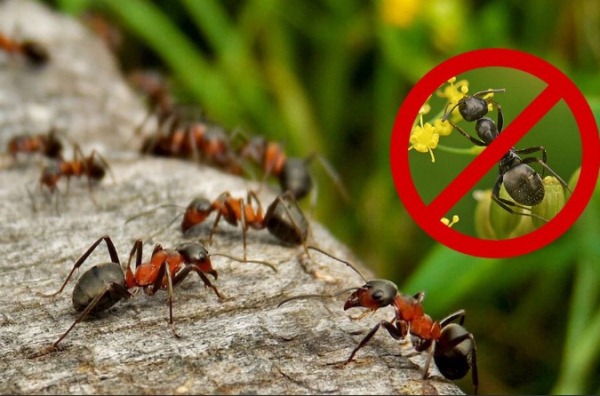 The most effective ways to deal with ants in the area
The most effective ways to deal with ants in the area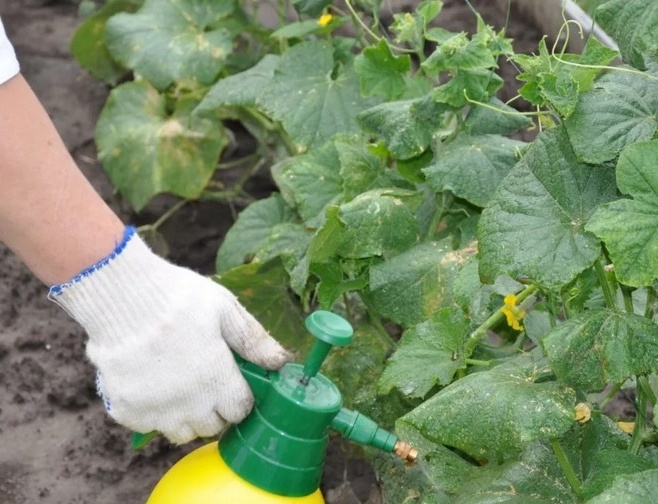 Cockchafer and Bear: An Easy Way to Save Plant Roots
Cockchafer and Bear: An Easy Way to Save Plant Roots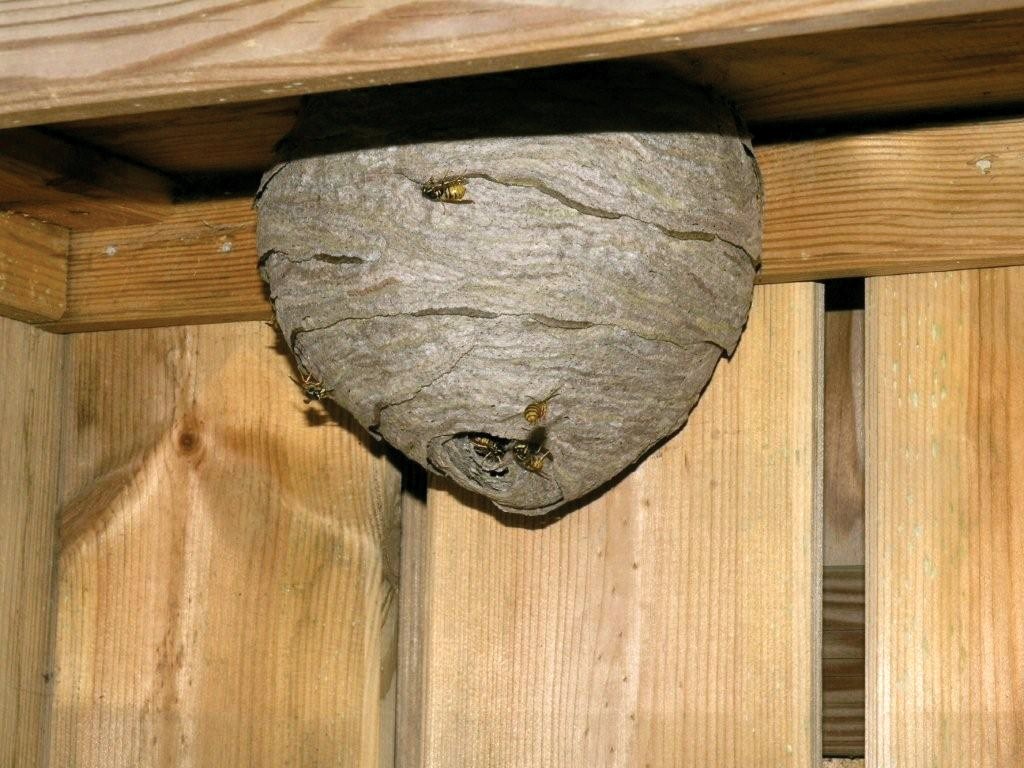 Get rid of the aspen nest quickly and safely.
Get rid of the aspen nest quickly and safely.